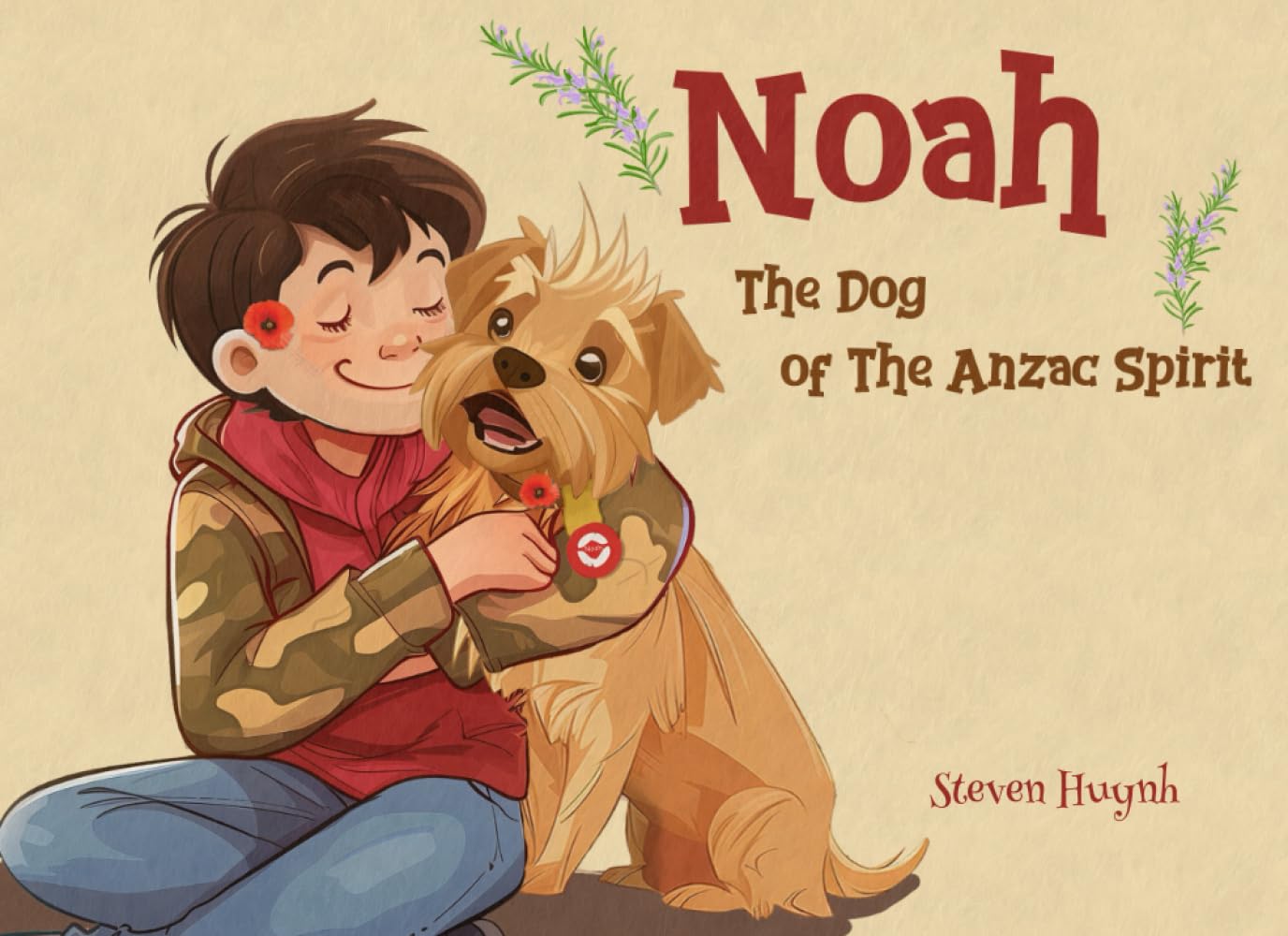The picture book follows the journey of Noah the dog to fulfil his deepest longing: to become a hero in the modern day. The courageous stories of Ben’s (his human friend) Grandpa back in the battlefield have always inspired him. But until he discovers the legend of Simpson’s donkey, the heroic animal from the Great War, his desire to become a hero truly ignites. Like a guiding light, the depiction of the donkey confirms Noah’s belief in his heroic mission as an animal. With his Anzac Spirit and Ben’s support, Noah sets out on an exciting journey to answer his heart’s call.
After reading, parents and/or educators could explore many lessons from Noah and Ben’s story. Among them is the Anzac Spirit demonstrated by Noah (Courage, Initiative, Endurance, Discipline, Mateship). You could engage children in discussions highlighting Noah’s personality, such as courage, resilience, and care for others. Children then reflect on which of these characteristics they believe they possess to become a hero at ‘their age’. Here are some examples of how children could embrace the Anzac Spirit: speaking up for what they believe is right (Courage), taking action (Initiative), working towards their goals (Endurance), taking responsibility (Discipline), being kind and helpful to others (Mateship/Friendship). Questions such as ‘When was the last time you helped someone at school? What did you do?’, ‘When was the last time you cleaned up after yourself?’ would be useful prompts during the discussions.
Ben’s gratitude towards Noah, community helpers, and those who died serving the country is also worth discussing. You could start by exploring the reason Ben expresses gratitude to Noah, and consider what would have happened if Noah had not saved Ben? From there, the discussions could be expanded to include the vital role of community and country helpers: What would happen if there weren’t community helpers such as police, doctors, fire fighters, teachers, cleaners and others that keep our communities safe, clean and healthy? By doing so, children may come to understand the importance of, and respect, these helpers in their lives.





Leave a Reply